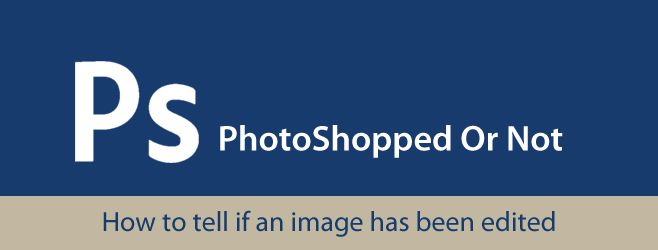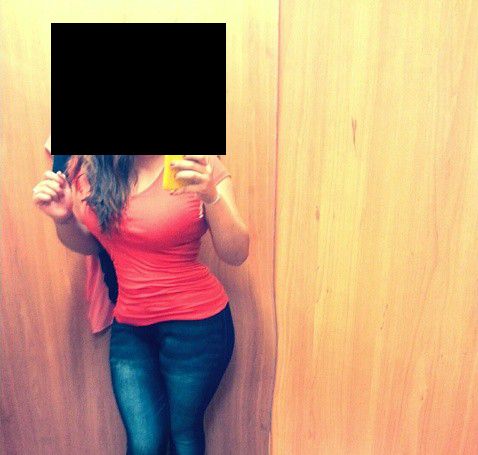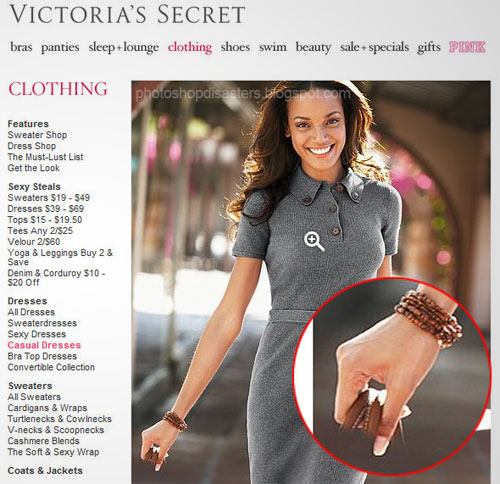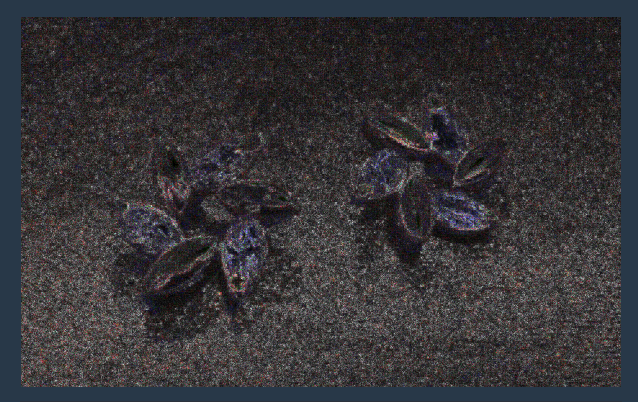Photoshopped or Not? Three Ways To Tell If An Image Is Real Or Fake
We live in a world where everyone has a camera touting smartphone. Kids are learning to photograph from a very early age and as they get older, they also learn to use Photoshop. Photoshop was at one time a sophisticated image editing tool still used extensively by designers. Today it has become both a verb and a tool to make up miracles and appear more physically appealing in photos. To put it bluntly, there are a lot of fake photos out there and Photoshop is the go-to tool used to create them. A few things are given; photos in magazines are always photoshopped. They’re made brighter or darker to suit their purpose among other changes but how do you tell if a photo has been tampered with if it isn’t in a magazine? Here are three very simple ways to check the integrity of a photo.
1. A Visual Inspection
You might think that Photoshop scam artists might perfect their game but there are often visual tell-tale signs that a photo has been manipulated. Even famous print magazines have come under fire for such blatant chop-shop images featuring missing or extra limbs. This proves one thing; if you know what to look for, a simple visual inspection will tell you a lot about how ‘real’ a photo is.
a. Curved & Bending Surfaces
The curving or bending of light, when it’s natural gives us wonderful things like that blood moon we just had a few days ago. When it isn’t natural, we end up with really obvious give aways. Look at the background where you suspect something foul in action. The curve in the wooden panel below is very obvious and a dead giveaway. Were the photo of a poorer quality, it would be significantly more grainy where a tool has been used to push or pop something out.
Flat surfaces as a rule do not bend to fit the curve of any body. Light may curve around an object (again the Blood Moon) but the object itself will not bend.
Source: This image is from a Reddit post, not linked to. We personally edited it to protect the identity of the individual. No other enhancements have been made.
b. Shifting Light
We mentioned earlier that magazines photoshop images a lot and that usually means making models appear more attractive but ordinary photos of furniture are also photoshopped to be made darker or brighter. It’s accomplished by using color filtersamong other things. This technique is used in video editing as well but when it goes bad you get visuals like those in The Walking Dead Season 2 (the one with the farm) where light changes to reflect dusk and dawn but the direction of the sun remains the same. In photos the difference is more pronounced. The image below is highlighting a product so badly that it fails to take into account the background which shows it is obviously sundown and the light should be significantly softer. The product pops out so badly from the image you can actually tell it is two images mashed into one.
Source: Buzzfeed
c. Loss In Quality
Some amateur Photoshop artists are the smart kind of stupid. They know they’ve done a choppy job, they know it’s obvious, and they know they can still fool you by reducing the quality of the photos. You will then trick your mind into going ‘Nah man’ when questioning the legitimacy of a photo and blaming it on low light or a low quality camera. Consider this; phone cameras are ridiculously powerful today, they come with a flash, a night mode, and hidden features for activating the bat signal. How bad can a photo really get?
Another tell-tale of a doctored photo is that when the reduced quality technique is used, you will notice that quality is not reduced uniformly. Areas that have been photoshopped will appear in lower quality most times.
d. A Little Common Sense
Some things are just obvious; floating limbs, ghost limbs, too many hands, too many legs, missing hands and/or legs. Sometimes all it takes is a cursory look and some common sense to tell a photo is not original. One of the most popular fails is by Victoria Secret who didn’t quite get rid of/put a handbag in their model’s hand.
Source: BoredPanda
2. Web Apps
We just mentioned how incredibly powerful cameras on our phones have become and that power doesn’t just mean sharper images. It also means that the camera is capturing a lot more information than it might have ten years ago. That information is a great way to tell if an image has been altered or not. Web apps exist that do just that and here are two popular ones.
a. FotoForensics
This site uses a technique called Error Level Analysis. It does a good job of explaining the technique and what to look for when trying to determine if a photo is real or not on its site. The good thing about the service is that it doesn’t rely on RAW images and their meta data to validate it. We ran a test on a purposely doctored image. The ELA results are below and you can visit the analysis page here.
The image was that of jewellery and I used Photoshop to make it seem shinier and more sparkly. With the ELA analysis, you can see some parts are obviously brighter than others.
b. Izitru
This is a somewhat different way to authenticate a photo. It relies on Meta data among other things and passes an image through six different tests. In the end it issues a certification of authenticity. It doesn’t pinpoint where any alterations may have been made so if you’re looking for bad Photoshop effects, you may be disappointed. You can check out the results of our doctored image here.
3. A Reverse Google Search
This isn’t so much a way to find out if an image has been Photoshopped as it to find the original source of one. It might help you spot some obvious manipulations such as a guy standing in front of Machu Picchu except the image of Machu Picchu came from a travel site. It helps in authenticating those images you find in viral stories on your Facebook feed. It is one of the weakest forms of image authentication with respect to Photoshop manipulation but it’s a great way to find out if someone stole an image and posted it as their own.






i hav cripplin depressison
Can anyone tell me if this picture is photo shopped? Trying to figure out it the piece of paper was in the original picture or photoshopped in.
https://uploads.disquscdn.com/images/8f396f40629f6ce1656935ba97ca839d70274bed63d8c4e7743cd4572d20acb0.jpg
Also he’s wearing a US flag… but does his dates like no one in the US does… day then month. Obvious fake is obvious.
Us military write their dates that way as well. That was the first thing I googled. Trying to figure out if the photo was photoshopped somehow. Any thoughts?
I really need help to know if this photo has been tampered with as it looks real but I am not 100% sure.. It’s definitely a photo of Jake Owen & I can see the date at the bottom of the photo so I know when it was taken, but I am not sure if he really wrote on piece of paper. He has made the note out to me & it looks so real.. Can anyone please help me? https://uploads.disquscdn.com/images/12ad6f9edaa71b70d5510e4206150685526e451750a5e9c33369872d036acbdb.jpg
The words are obviously a font, not hand-written. The edge of the paper at the top middle and by his right (our left) fingers seems smudged. Also, the white paper behind the text looks smudged. If your gut is telling you it isn’t real, it probably isn’t.
Thank you
🙂
i don’t get it.
A new tool for proving if photos are real is an app called Uproov. once a photo is taken through
the app it is encrypted and locked into the blockchain. Afterwards you can tell if it has been changed.
Us military write their dates that way as well.
My Uncle Harrison recently got a new cream Kia Rio Hatchback just by some parttime W0RKing online with a macbook air. look at more info,,,
>>>>>-> ow.ly/CwNl6
Do not accept these gifts. Repent and tell the police about your uncle.
What ARE you talking about? lol …maybe it isn’t supposed to be funny, ok..but it’s definitely not related to photographic manipulation. Trolls. Seems to be an epidemic.
What are you talking about?